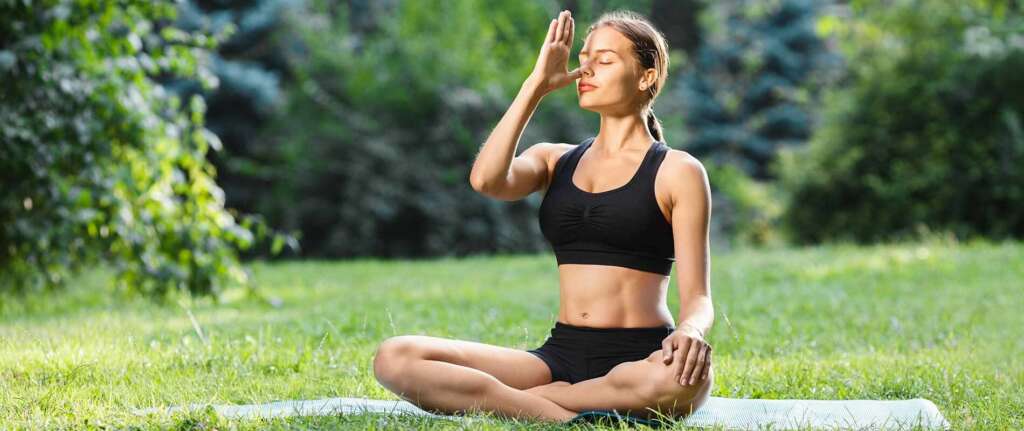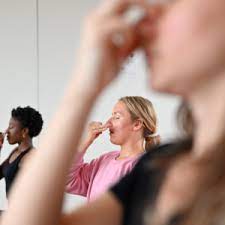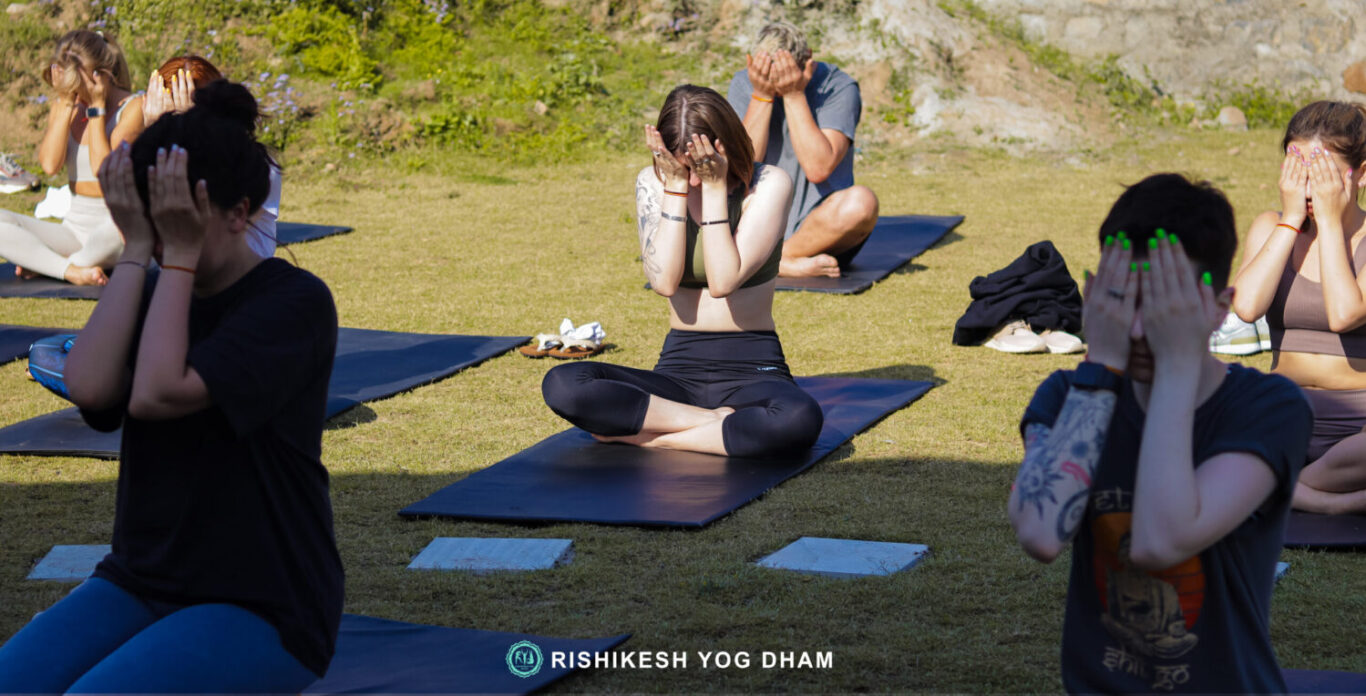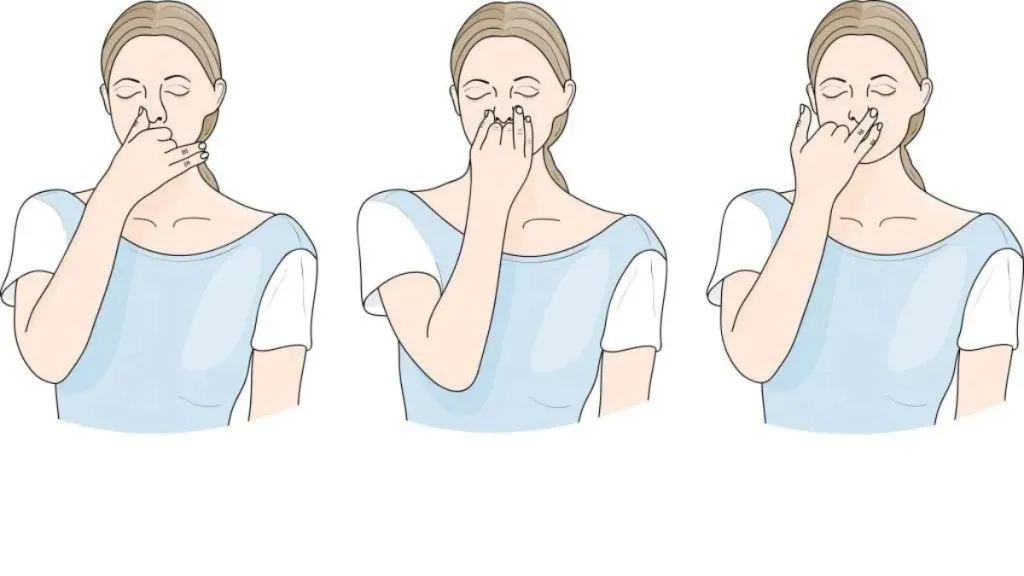Prana – What does it mean?
Prana means universal life energy and is of great importance for all types of Yoga. In ancient China, it is called Qi and in Japan, it is called Ki. Energy is released when holding asanas and when practicing Pranayama (breathing techniques). The aim is to control this energy with the help of concentration during breathing and to store it during relaxation. Prana can then be influenced at will. With the appropriate concentration, prana can be directed within the body to where it is needed.
Prana is distributed throughout the body via the nadis (meridians). Breathing is a source of prana. Our body is a complex field of prana that circulates continuously through cells, tissues, muscles and organs. Like a subtle electromagnetic force, the universe is permeated with energy and enables life and activity. The meridians correspond to the paths along which prana is transported through the body. Blockages in the flow of prana, triggered by emotions, for example, can lead to illness or discomfort.
The flow of energy can be harmonized again using certain techniques such as yoga or Chi Gong. A healthy, balanced diet can also have a positive effect on the flow of prana. Everything we eat affects the brain. Concentration and mental balance are directly dependent on nutrition. A balanced diet with plenty of minerals refreshes the mind and promotes clear thinking, as all cells are flooded with dynamic energy.
Pranayama Basics
In the traditional sense, breathing (pranayama) consists of two phases, inhalation and exhalation. The air is brought into the lungs, where gas exchange takes place, and then it is exhaled again. Pranayama means “guided breathing technique” and the effect on health is very diverse. Often, shallow breathing only uses the upper part of the lungs. This can lead to tension in the upper part of the back. Complete breathing means that the full volume of the lungs is used to generate life energy.
In Hatha Yoga, the connection between postures (asanas) and breathing (pranayama) is an important factor. The interaction of the two aspects results in an unhindered flow of prana, which can ultimately increase our physical and mental well-being. The ability to concentrate increases, tension and fear can be reduced. If the mind can be controlled, the flow of prana can also be controlled.
In addition to breathing in and breathing out, holding your breath with full lungs and with empty lungs is also important for yoga. This activates cellular respiration. The cells that come into contact with oxygen absorb it. By holding your breath, the CO2 emission increases when you breathe out, and the oxygen intake increases when you hold your breath with full lungs. This makes it much easier to perceive your breath.

The Benefits of Pranayama Breathing Technique
An increase in lung capacity can be seen after just a short time. This also stimulates heart activity. Blood circulation in the large veins is stimulated. Controlled, rhythmic breathing has a regulating effect on heart activity and the associated blood circulation. Pranayama also activates the diaphragm and thus massages the organs. A harmonious relationship is created between controlled breathing and the abdominal organs. All biological processes related to the absorption of oxygen are affected. There is evidence that stress has a negative effect on breathing and heart rhythm. Imbalances in breathing can disrupt the harmony of the whole person. Pranayama can heal us from internal imbalances and release blockages.
As a healing method, Prana healing is considered to be an efficient method in which a gentle healing takes place on the patient’s energy body without touching the physical body. The subtle energy bodies are freed from blockages. This can have a positive effect on discomfort or even illness. The energy body (aura) absorbs the energy and distributes it through the chakras in the body.
The physical body can become ill due to poor nutrition, stress, environmental influences or even emotionally unprocessed experiences. Prana plays a significant role in the healing of the body. Self-healing powers are of great importance. Prana healing primarily activates mental, spiritual and emotional energies and brings them back into balance. Prana healing can be used for a wide range of illnesses. These include high blood pressure, rheumatism, back pain, circulatory diseases, allergies and psychological imbalances.
Pranayama Exercises
Observe your breath
A basic requirement for pranayama practice is to observe your body and your breath. Breathing meditation is often used as an introduction to meditation because it helps to calm the mind and build concentration. Even counting your breaths can serve as an introduction and distract you from disturbing thoughts. The rising and falling of the abdominal wall makes it clear that there is a connection between the body and the breath.
Everyone knows the saying “take a deep breath first” or “you’re out of breath”. Calm, even breathing is a basic requirement for a balanced life. Many people value breathing observation as an aid to falling asleep. Inhaling and exhaling should be done very slowly. This requires concentrated attention to the breathing process and a calm, quiet mind. Energy will flow more strongly through the body when breathing is calm and the body is in harmony with the breath. Time should not be of great importance, because under time pressure breathing usually speeds up and concentration wanes.
Nadi Shodhana (alternate nostril breathing)
Nadi Shodhana means alternate breathing and gets its name from the technique of breathing alternately through the right and left nostrils. The two nostrils are associated with different energy flows. The right nasal passage is associated with male energy. This stands for warmth, activity and the flow of energy that flows from top to bottom through the body. The left nasal passage is associated with female energy and stands for coolness, calmness and passivity.
The corresponding energy flow flows from bottom to top through the body. The two energy flows are also assigned to the energy channels Ida and Pingala. Ida stands for the left energy flow and Pingala for the right energy flow. They run along the spine and lead the prana to the chakras. The energy channels run through the entire body and are also called Nadis. The exact translation of Nadi Shodhana also means “cleaning of the channels”. The breathing technique releases blockages and brings our energies back into balance.
In practice:
- A comfortable sitting position is the basic position for the breathing technique.
- Middle finger and index finger are placed between the eyebrows
- Thumb and ring finger alternately close both nostrils
- Breathe in deeply through both nostrils
- The thumb closes the right nostril
- Exhale through the left nostril, pause briefly
- left Inhale, pause briefly
- Exhale to the right, pause briefly
- inhale on the right
- switch sides again
- The breathing technique should be practiced for 5-10 minutes at your own rhythm

Ujjayi
Breathing produces a sound that resembles the sound of waves. This is caused by the friction of air on the constricted larynx. Breathing occurs through a slightly contracted glottis. The breathing technique is effective against stress. Tension in the abdominal area can be reduced. Digestion and the nervous system are strengthened. The mind is calmed and fears can be reduced.
Since a sound is created when practicing Ujjayi breathing, it is often easier to maintain concentration. It is also used when practicing asanas to supply the body with optimal oxygen. The muscles get their power from the prana and the breathing provides the prana for this.
In practice:
- a comfortable sitting position is the basic position for the breathing technique
- The muscles around the opening of the trachea are contracted, the larynx is narrowed
- Breathe deeply and concentrate on the throat
- When inhaling and exhaling, a “rubbing sound” is created
- Exhale as slowly as possible
Kapalabhati
Kapalaphati breathing is also known as cleansing and detoxification breathing. Literally translated, Kapalaphati means “shining skull”. It promotes concentration, increases lung volume, promotes relaxation and concentration, supplies the body with fresh oxygen and detoxifies it, as toxins and carbon dioxide are eliminated when breathing out.
In addition, the nasal passages are cleaned. It is a detoxifying breath. Kapalabhi can be used very well as preparation for meditation, as a calmness of mind usually occurs after practice.
In practice:
- A comfortable sitting position is the basic position for the breathing technique
- Breathe in and out deeply, straight spine, shoulders relaxed
- Draw in your stomach and breathe out through your nose in bursts, like a bellows.
- When inhaling, relax the abdominal wall again
- Exhale in bursts about 30 times and let the inhalation happen automatically
- Inhalation should be twice as long as exhalation
- Several cycles are practiced with increasing frequency
- Beginners should not do more than 50-80 exhalations per cycle. Three cycles should not be exceeded. Advanced practitioners can do up to 200 exhalations in up to 10 cycles.
Read More :
Variation:
Alternating Kapalabhati:
- Instead of breathing out through both nostrils, you breathe alternately through one nostril.
- The breathing rhythm should not become too fast so that passive inhalation continues
The breathing technique should not be practiced if you have high blood pressure, inflammation in the abdominal cavity, pregnancy or menstruation. You should not eat anything beforehand and, if possible, ventilate the room in which you practice beforehand.


